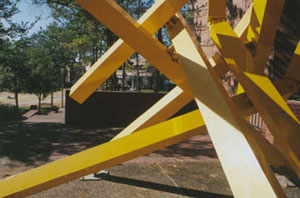Perspective distortion (caused by camera to subject distance)
|
|
In photography and cinematography, perspective distortion descibes the appearance of a part of the subject appearing abnormally large, relative to the rest of the scene. This is especially noticable when that part of the scene extends towards the camera. It is affected solely by the distance between the camera and subject, and the smaller this distance the greater the perspective distortion. Because it is necessary to use a wider-angle (and hence shorter focal length) lens as this distance decreases in order to preserve a full view of the subject, the effect is frequently thought to be caused by lens focal length or angle of view, and is often referred to in those terms.
For this reason, lens choice in film and photography can influence perception of a scene. The general assumption that "undoctored" photos can not distort a scene is incorrect. Perspective distortion is particularly noticeable in en face portraits. Taken with wide-angle lenses held close to the subject, they generally give an unpleasant impression, making the nose appear far too large, and distorting the facial expression. Framing the same subject identically while using a moderate telephoto lens requires the camera be moved back from the subject, and this will result in considerably less perspective distortion. It is for this reason that, for a 35 mm camera, lenses with focal lengths from about 85 through 135 mm are generally considered to be a good portrait lens.
Below, a series of four photos shows an object framed as nearly the same as possible with four different lenses. As a result of the different angle of view of each lens, the photographer moved closer to the object with each photo. Note that the angle of view changes significantly (compare the background in each photo), and the distance between objects appears greater with each succeeding image. In the fourth lower right image, taken with the widest lens, the building behind the object appears much further away than in reality.
Missing image
Sameframe_50mm_f8.jpg
50mm

Photos taken using a 35 mm camera with a 100 mm, a 70 mm, a 50 mm, and a 28 mm lens.
The process described above has bearing on the in-camera special effect known as the Dolly zoom, where the zoom lens zooms out at the same time as the camera moves towards the subject in such a way as to keep the subject the same size in the frame while the background "changes size" relative to the subject.


